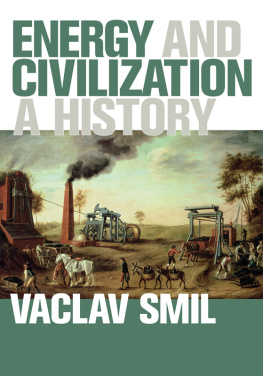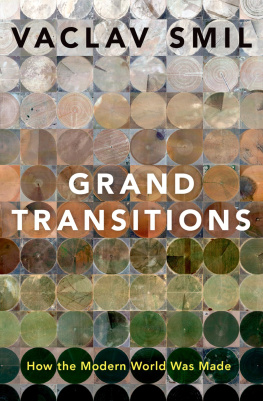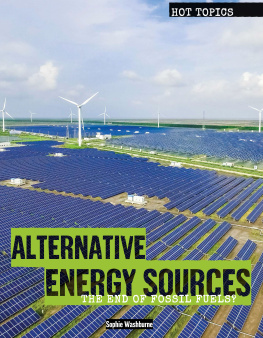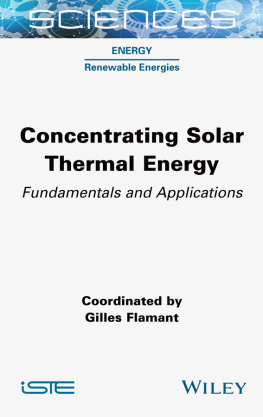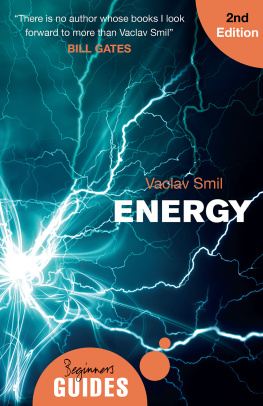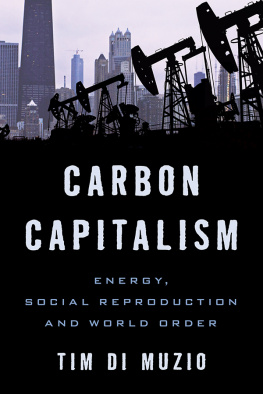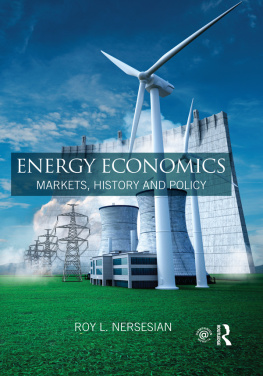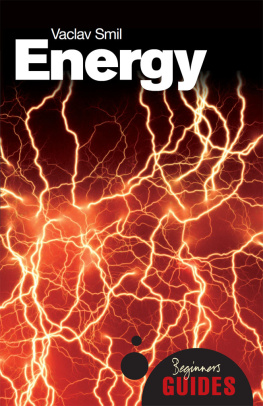
Energy and Civilization
A History
Vaclav Smil
The MIT Press
Cambridge, Massachusetts
London, England
2017 Massachusetts Institute of Technology
All rights reserved. No part of this book may be reproduced in any form by any electronic or mechanical means (including photocopying, recording, or information storage and retrieval) without permission in writing from the publisher.
This book was set in Stone Sans and Stone Serif by Toppan Best-set Premedia Limited. Printed on recycled paper and bound in the United States of America.
Library of Congress Cataloging-in-Publication Data
Names: Smil, Vaclav, author.
Title: Energy and civilization : a history / Vaclav Smil.
Other titles: Energy in world history
Description: Cambridge, MA : The MIT Press, [2017] | Revised edition of: Energy in world history / Vaclav Smil. 1994. | Includes bibliographical references and index.
Identifiers: LCCN 2016030742 | ISBN 9780262035774 (hardcover : alk. paper)
eISBN 9780262338295
Subjects: LCSH: Power resources--History. | Power resources--Social aspects. | Technology and civilization. | Energy consumption--Social aspects.
Classification: LCC TJ163.5 .S623 2017 | DDC 333.7909--dc23 LC record available at https://lccn.loc.gov/2016030742
ePub Version 1.0
Preface and Acknowledgments
I finished writing Energy in World History in July 1993; the book came out in 1994, and it remained in print for two decades. Since 1994 energy studies have been through a period of great expansion, and I have added to it by publishing nine books dealing explicitly with energy matters and a dozen interdisciplinary books with significant energy components. Consequently, once I decided to revisit this fascinating topic it was obvious that superficial updating would not do. As a result, this is a substantially new book with a new title: the text is nearly 60% longer than the original, and there are 40% more images and more than twice as many references. Boxes sprinkled throughout the book contain some surprising calculations, as well as many detailed explanations of important topics and essential tables. I have also quoted from sources ranging from the ClassicsApuleius, Lucretius, Plutarchto nineteenth- and twentieth-century observers such as Braudel, Eden, Orwell, and Senancour. Graphics were updated and created by Bounce Design in Winnipeg; two dozen archival photographs were secured from Corbis in Seattle by Ian Saunders and Anu Horsman. As is always the case with interdisciplinary studies of this kind, this book would not have been possible without the work of hundreds of historians, scientists, engineers, and economists.
Winnipeg, August 2016
1 Energy and Society
Energy is the only universal currency: one of its many forms must be transformed to get anything done. Universal manifestations of these transformations range from the enormous rotations of galaxies to thermonuclear reactions in stars. On Earth they range from the terra-forming forces of plate tectonics that part ocean floors and raise new mountain ranges to the cumulative erosive impacts of tiny raindrops (as the Romans knew, gutta cavat lapidem non vi, sed saepe cadendoA drop of water hollows a stone not by force but by continually dripping). Life on Earthdespite decades of attempts to catch a meaningful extraterrestrial signal, still the only life in the universe we know ofwould be impossible without the photosynthetic conversion of solar energy into phytomass (plant biomass). Humans depend on this transformation for their survival, and on many more energy flows for their civilized existence. As Richard Adams (1982, 27) put it,
We can think thoughts wildly, but if we do not have the wherewithal to convert them into action, they will remain thoughts. History acts in unpredictable ways. Events in history, however, necessarily take on a structure or organization that must accord with their energetic components.
The evolution of human societies has resulted in larger populations, a growing complexity of social and productive arrangements, and a higher quality of life for a growing number of people. From a fundamental biophysical perspective, both prehistoric human evolution and the course of history can be seen as the quest for controlling greater stores and flows of more concentrated and more versatile forms of energy and converting them, in more affordable ways at lower costs and with higher efficiencies, into heat, light, and motion. This tendency has been generalized by Alfred Lotka (18801949), an American mathematician, chemist, and statistician, in his law of maximum energy: In every instance considered, natural selection will so operate as to increase the total mass of the organic system, to increase the rate of circulation of matter through the system, and to increase the total energy flux through the system so long as there is present an unutilized residue of matter and available energy (Lotka 1922, 148).
The history of successive civilizations, the largest and most complex organisms in the biosphere, has followed this course. Human dependence on ever higher energy flows can be seen as an inevitable continuation of organismic evolution. Wilhelm Ostwald (18531932, recipient of the 1909 Nobel Prize in Chemistry for his work on catalysis) was the first scientist to expand explicitly the second law of energetics to all and any action and in particular to the totality of human actions. All energies are not ready for this transformation, only certain forms which have been therefore given the name of the free energies. Free energy is therefore the capital consumed by all creatures of all kinds and by its conversion everything is done (Ostwald 1912, 83). This led him to formulate his energetic imperative: Vergeude keine Energie, verwerte sieDo not waste any energy, make it useful (Ostwald 1912, 85).
Three quotations illustrate how Ostwalds followers have been restating his conclusions and how some of them have made the link between energy and all human affairs even more deterministically explicit. In the early 1970s Howard Odum (19242002) offered a variation on Ostwalds key theme: The availability of power sources determines the amount of work activity that can exist, and control of these power flows determines the power in mans affairs and in his relative influence on nature (Odum 1971, 43). In the late 1980s Ronald Fox concluded a book on energy in evolution by writing that a refinement in cultural mechanisms has occurred with every refinement of energy flux coupling (Fox 1988, 166).
One does not have to be a scientist to make the link between energy supply and social advances. This is Eric Blair (George Orwell, 19031950), writing in 1937 in the second chapter of The Road to Wigan Pier, after his visit to an underground coal mine:
Our civilization, pace Chesterton, is founded on coal, more completely than one realizes until one stops to think about it. The machines that keep us alive, and the machines that make machines, are all directly or indirectly dependent upon coal. In the metabolism of the Western world the coal-miner is second in importance only to the man who ploughs the soil. He is a sort of caryatid upon whose shoulders nearly everything that is not grimy is supported. For this reason the actual process by which coal is extracted is well worth watching, if you get the chance and are willing to take the trouble. (Orwell 1937, 18)
But restating that fundamental link (as Orwell did) and claiming that cultural refinements have taken place with every refinement of energy flux (as Fox does) are two different things. Orwells conclusion is unexceptionable. Foxs phrasing is clearly a restatement of a deterministic view expressed two generations earlier by the anthropologist Leslie White (19001975), who called it the first important law of cultural development: Other things being equal, the degree of cultural development varies directly as the amount of energy per capita per year harnessed and put to work (White 1943, 346). While there can be no dispute either about Ostwalds fundamental formulation or about energys all-encompassing effect on the structure and dynamics of evolving societies (pace Orwell), a deterministic linking of the level of energy use with
Next page
